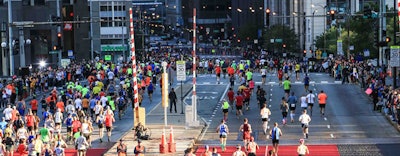
This past October, the Bank of America Chicago Marathon saw approximately 45,000 participants. The day started with clear skies and a temperature in the mid 50s, climbing into the 70s as the day progressed. The first men's and women's runners crossed the finish line at 2:09:25 and 2:23:23, respectively, and throughout the course of the day, 45 competitors were taken to the hospital and many more treated at aid stations located throughout the course.
 Dr. George T. Chiampas is an assistant professor in the Department of Emergency Medicine at the Feinberg School of Medicine at Northwestern University and Northwestern Memorial Hospital and has served as Bank of America Chicago Marathon Medical Director since 2007.
Dr. George T. Chiampas is an assistant professor in the Department of Emergency Medicine at the Feinberg School of Medicine at Northwestern University and Northwestern Memorial Hospital and has served as Bank of America Chicago Marathon Medical Director since 2007.
"Typically we'll see anywhere from two to 10 percent requiring medical care," says Chicago Marathon medical director George Chiampas. "Out of 45,000 runners, we'll routinely see 1,000 require care, upwards of 2,500 in some circumstances." Preparing for those incidents is a yearlong process, involving collaboration with thousands of volunteers, various city departments and myriad participating organizations. Years of practice have led to the Chicago Model for race management, which has been adopted by other event organizers. The keys to success, Chicago organizers say, are focusing on organizational structure, information systems and communication.
EVERYONE IN ORDER
Gathering and disseminating information among more than 14,000 volunteers, 45,000 race participants and a million-plus spectators starts with establishing a clear organizational structure. "Whatever event, you need to focus on organizational structure," says Michael Nishi, executive vice president for Chicago Event Management and general manager for the marathon. "It's all about the people — recruiting them, creating policies and training them on those policies. Then you need supervision, a structure of who reports to whom, what those roles and responsibilities are."
Marathon organizers debuted a unified command in 2008, one year after record heat taxed participants, aid stations and medical personnel to the extent organizers halted the 2007 race before most runners had finished. It includes a physical command post where Nishi, Chiampas and executive race director Carey Pinkowski spend the majority of their day. "At any time, there's either Carey, myself or George in case a decision needs to be made," Nishi says. "We have the ability and authority to cancel the event based on whatever emergency or issue is taking place."
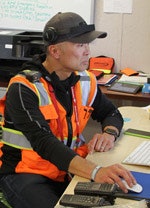 Michael Nishi is the Executive Vice President for Chicago Event Management. Nishi oversees the production of all events with a particular focus in event operations and emergency response logistics.
Michael Nishi is the Executive Vice President for Chicago Event Management. Nishi oversees the production of all events with a particular focus in event operations and emergency response logistics.
Working in the command facility with them are representatives from the various other organizations they work with in the event of a major incident, including city departments and emergency response organizations such as the Red Cross. "It's also where we do all of our other event operations," Nishi says. "So even when it's a good day and the city agencies don't have much to do from a response standpoint, it's still always busy."
Then, spread out over the course, are 20 aid stations with additional volunteers, all reporting back to the forward command facility. "We have 2,000 medical volunteers and more than 350 EMS," says Chiampas, just a small fraction of the larger volunteer force. As with all other aspects of the event, preparations for these volunteers start well in advance of the actual event day. "We've developed a web-based program that goes through specific situations you would see during a marathon," Chiampas says. "We disseminate that to all of our medical volunteers, as well as EMS. We send out a CPR tutorial and a video on how to use an AED — that goes out to all of our volunteers, as well as all of our runners."
These tools help volunteers and participants react to a given situation and know what action to take. And the time put into these efforts by organizers pays off in the long run. "We have a lot of returning volunteers, which contributes to consistency and competency," Chiampas says. "That return rate is high in part because of all the systems that we've invested in."
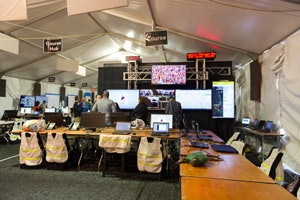 For the decision-makers who operate an event, having all this information coming into one location enables us to paint a better picture. — Michael Nishi
For the decision-makers who operate an event, having all this information coming into one location enables us to paint a better picture. — Michael Nishi
CONNECTING THE NETWORK
With so many people spread out over such a large area, communicating quickly and accurately becomes difficult. "We have monitors and people giving us an idea of what's happening in so many areas," says Nishi, noting the course martials, aid station volunteers, vehicle processions and GPS units. "How do we reach out to these groups? How many radios do we have and who has one? What are the other communication channels we use to communicate information out to those groups?"
The Chicago Marathon's communication channels run from traditional technologies to the more advanced. For example, each aid point is staffed by ham radio enthusiasts. "They're giving updates, pushing out information," says Nishi. "If all other radio communications fail, they're able to provide information back out to the course."
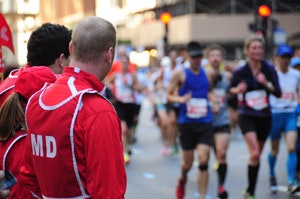 The types of injuries that you see during an endurance event are different from what medical providers see on a daily basis. — George Chiampas
The types of injuries that you see during an endurance event are different from what medical providers see on a daily basis. — George Chiampas
All information is relayed back to the forward command facility, where it is pieced together on monitors to give organizers a more holistic view of the race and share it as needed. "We'll take that information and provide a link to other monitors in different facilities," Nishi says.
Communicating updates back to competitors and spectators is also important. Public address systems at each aid station function as an entertainment tool, but they also broadcast important information and updates. Additionally, the Event Alert System is the most basic system for communicating with runners. The color-coded system is used throughout the course to alert participants of conditions on the course throughout the day, with green indicating low risk up to an extreme "black" risk, primarily in regard to weather conditions. "Hopefully in a warm-weather condition, we're changing people's behavior to slow down," Nishi says.
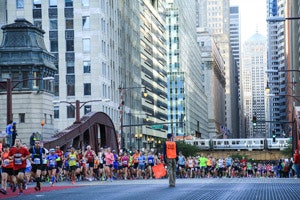 We've developed data analytics that allow us to see our course, where our runners are, what streets are open. — George Chiampas
We've developed data analytics that allow us to see our course, where our runners are, what streets are open. — George Chiampas
KEEPING TRACK OF THE STATS
If there's a technology that can benefit either race participants or event operation, Chicago Marathon organizers are probably using it. "There's a lot of technology that's evolving and really impacting our event in a positive way," Nishi says. "From improving the experiential aspect to communicating and working more efficiently."
A timing mat located at every 5K point, as well as other points throughout, gives runners an idea of their pacing, but it's also a useful tool for organizers, says Nishi. "We're able to provide more information to the spectator," he says. "It's helped us on a customer-service level — if you don't see people cross certain points, we can quickly start to piece together where they could be."
Using the latest technology allows organizers to put together a real-time picture and respond to incidents more quickly — or intervene before an incident occurs. Knowing where runners are also allows organizers to alert each checkpoint to prepare for increased volume, or shift resources from one point to another.
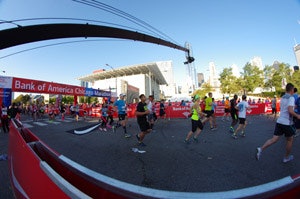
The ultimate goal it to ensure a safe, successful race day for all participants, and systems are also in place to help keep an eye on their health. This past fall, organizers tested out handheld blood analyzers at each of the course's aid stations, allowing medical volunteers to monitor vitals such as heart function, physical exertion and dehydration.
"We've also developed a medical patient tracking system so we can have a clear and concise understanding of what runners are experiencing — who they are, where they are," Chiampas says. "We connect that to the American Red Cross so that if someone goes to the hospital, we can immediately contact his or her family."
RELATED: Halting of Chicago Marathon Brings Relief, Anger
SCALING THE COURSE
Principles of the Chicago Model can be applied across a spectrum of event races, from other large-scale marathons to smaller community race events. The basics are the same for any event, Nishi says. "Every event needs to go through a risk assessment. Look at your threats and vulnerabilities, crowd management. How do you direct people to where they need to go? What are your emergency action plans?"
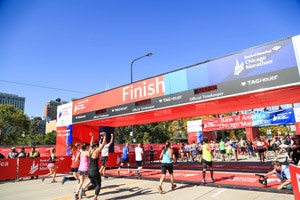
Moreover, while not every organization has the advanced tools and technology available to major marathons, each should still take stock of what it does have, and then find the best way to make use of them. "We have more than 1,000 radios," says Nishi. "A smaller event might have 50. Any event needs to look at available tools and how to use them."
According to Chiampas, the most cost-effective thing any event can do is build strong relationships with all event stakeholders. "You need a great relationship and communication with local safety personnel, the police department, hospitals, EMS," he says. "No matter what, you need those relationships."
This article originally appeared in the Winter 2016 issue of Gameday with the title "Lessons in event race safety and security from the Chicago Marathon"





































